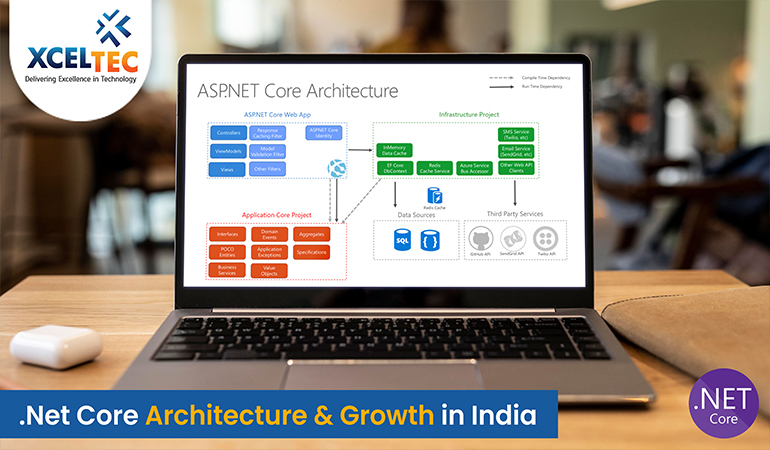


You can create high-performance, cross-platform web apps using ASP.NET. Build apps that are easier to test and manage with patterns like MVC and built-in support for Dependency Injection.
A great API necessitates a fantastic architecture. From ASP.NET Core’s built-in capabilities to architecture philosophy and design patterns, we’ll look at many elements of API design and development.
.NET Core is open source in its entirety, not just in its source code. The source code and documentation are both really open source. There were over 10,000 non-Microsoft workers who contributed. Knowing that the entire framework is open-source is helping to boost adoption among historically non-Microsoft or non-.NET-friendly enterprises. You can download the whole source code and start contributing by going to the following URL on GitHub.
The desire to run cross-platform was a major driving force for the development of.NET Core and ASP.NET Core.
Another benefit of.Net Core is its speed. When we consider where ASP.NET came from, Web Forms and MVC, there was a lot of legacy code out there, and performance wasn’t always one of the strongest qualities, but it is now with.NET Core.
Portable Class Libraries have been around for a while with Silverlight and mobile deployment, but they weren’t always well-executed. There were various profiles, all of which were numbered, and there was some confusion. This is considerably improved by NET Standard. All.NET runtimes must adhere to this official definition.
Portable Deployment (different from Portable Class Libraries) and Stand-alone Deployment are the two deployment options available.
Full command-line support is not an afterthought for.NET Core; it is a top priority. There’s a compelling explanation for this. Because not all.NET Core developers will use Visual Studio if only the Visual Studio tools are developed and the command-line lags, a lot of developers will be left out in the cold, and community-wide acceptance of.Net Core will suffer as a result.
We obtain interoperability with the entire.NET Framework using.NET Core 2. As a result,.NET Framework libraries can be used to reference.NET Standard libraries. Of course, there are restrictions, and you can only use.NET Standard types.
As we’ve shown, building and developing a strong ASP.NET Core 3.1 Web API solution necessitates the understanding of a decoupled architecture that allows each layer to be testable while adhering to the Single Responsibility Principle. XcelTec hopes that this knowledge will assist you in developing and maintaining production Web APIs for your business.
Contact us on:- +91 987 979 9459 | +1 919 400 9200
Email us at:- sales@xceltec.com
 1
1
 2
2
 3
3
how can we help you?